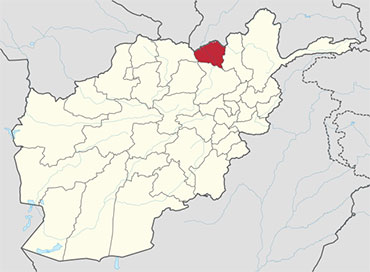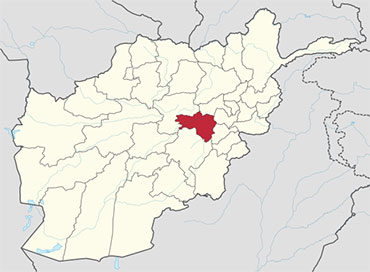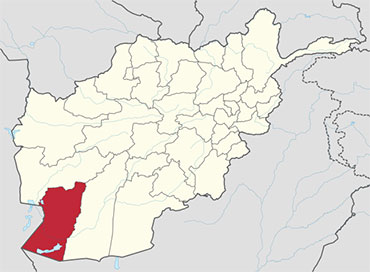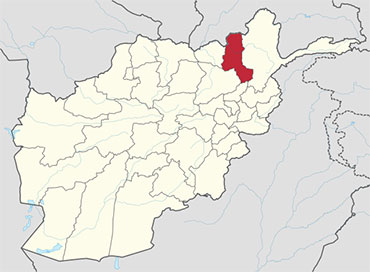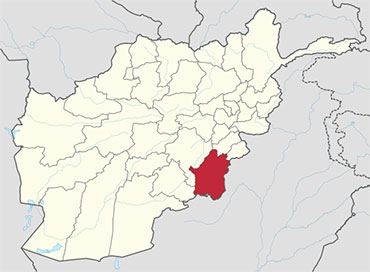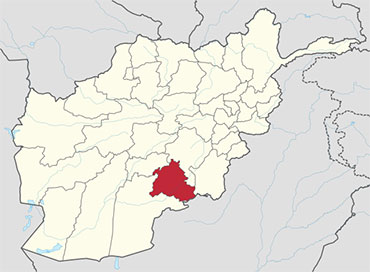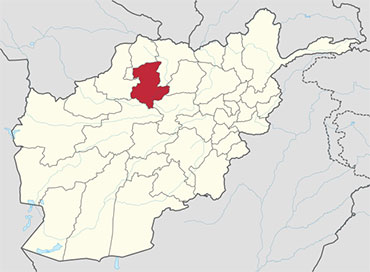 Sar-e Pol, also spelled Sari Pul is one of the thirty-four provinces of Afghanistan, located in the north of the country. It borders Jowzjan and Balkh to the west and north, Ghor Province to the south, and Samangan to the east. The province is divided into 7 districts and contains 896 villages. It has a population of about 532,000, which is multi-ethnic and mostly a tribal society. The province was created in 1988, with the support of northern Afghan politician Sayed Nasim Mihanparast. The city of Sar-e Pol serves as the provincial capital.
Sar-e Pol, also spelled Sari Pul is one of the thirty-four provinces of Afghanistan, located in the north of the country. It borders Jowzjan and Balkh to the west and north, Ghor Province to the south, and Samangan to the east. The province is divided into 7 districts and contains 896 villages. It has a population of about 532,000, which is multi-ethnic and mostly a tribal society. The province was created in 1988, with the support of northern Afghan politician Sayed Nasim Mihanparast. The city of Sar-e Pol serves as the provincial capital.
History
Between the early 16th century and the mid-18th century, the territory was ruled by the Khanate of Bukhara. It was given to Ahmad Shah Durrani by Murad Beg of Bukhara after a treaty was signed in or about 1750, and became part of the Durrani Empire. It was ruled by the Durranis followed by the Barakzai dynasty. The area was untouched by the British during the three Anglo-Afghan wars that were fought in the 19th and 20th centuries. It remained peaceful for about one hundred years until the 1980s Soviet war in Afghanistan.
Recent History
During the Afghan Civil War, the area was controlled by forces loyal to Abdul Rashid Dostum. It was captured by the Taliban in 1998. Aminullah Amin, the first senior member of the Taliban to be captured, was the former governor of the province.
Swedish-led Provincial Reconstruction Team (PRT), which has been based in Mazar-e Sharif since about 2005 and responsible for four provinces including Sar-e Pol, established an office and some troops in the province. The Afghan National Security Forces (ANFS) began expanding in the last decade and slowly took over security from International Security Assistance Force (ISAF). The Afghanistan-Turkmenistan border is maintained by the Afghan Border Police (ABP) while law and order for the rest of the province is provided by the NATO-trained Afghan National Police (ANP).
In 2009, the provincial Police Chief stated that weapons had been collected from many people and three districts, namely, Sangcharak, Gosfandi, and Sozama Qala areas termed as the peaceful districts of the province. In operations against militants, the police chief said they had arrested a prominent Taliban commander Mullah Nader along with 11 other people during the recent operations. He said scores of kilograms of hashish and opium had also been seized from people during the operations.
The biggest threat to travelers in Sar-i-Pul remains highway bandits and thieves, corrupt militiamen and police, and road hazards. The Taliban have small cadres operating throughout the province but rely on larger support networks in neighboring provinces.
Healthcare
The percentage of households with clean drinking water increased from 8% in 2005 to 15% in 2011. The percentage of births attended to by a skilled birth attendant increased from 0% in 2005 to 20% in 2011.
Geography
Sar-e Pol is a mountainous province, especially in its southern part. It covers an area of 16,360 km. Three quarters (75%) of the province is mountainous or semi mountainous terrain while one-seventh (14%) of the area is made up of flat land. The province is divided into 7 districts, containing 896 of villages.
Demography
The total population of the province is about 532,000. According to the Naval Postgraduate School, the ethnic groups of the province are as follows: Tajik(+Sayyeds) (majority), Uzbeks, followed by small Arabs, Pashtun, and Hazara communities.
The languages spoken in and around the province are Persian language (main language of the province), Uzbeki, and Pashto. All the inhabitants practice Islam, majority of which are Sunnis while the Shias make up the minority.
Districts
Sar-e Pol province is divided in to 7 districts.
| District | Population | Area |
|---|---|---|
| Balkhab | 86,041 | 2,974 km2 |
| Gosfandi | 39,721 | 1,092.14 km2 |
| Kohistanat | 72,037 | 6,094 km2 |
| Sancharak | 87,670 | 1,089 km2 |
| Sar-e Pol | 115,463 | 2,037 km2 |
| Sayyad | 48,800 | 1,252 km2 |
| Sozma Qala | 35,993 | 522 km2 |
